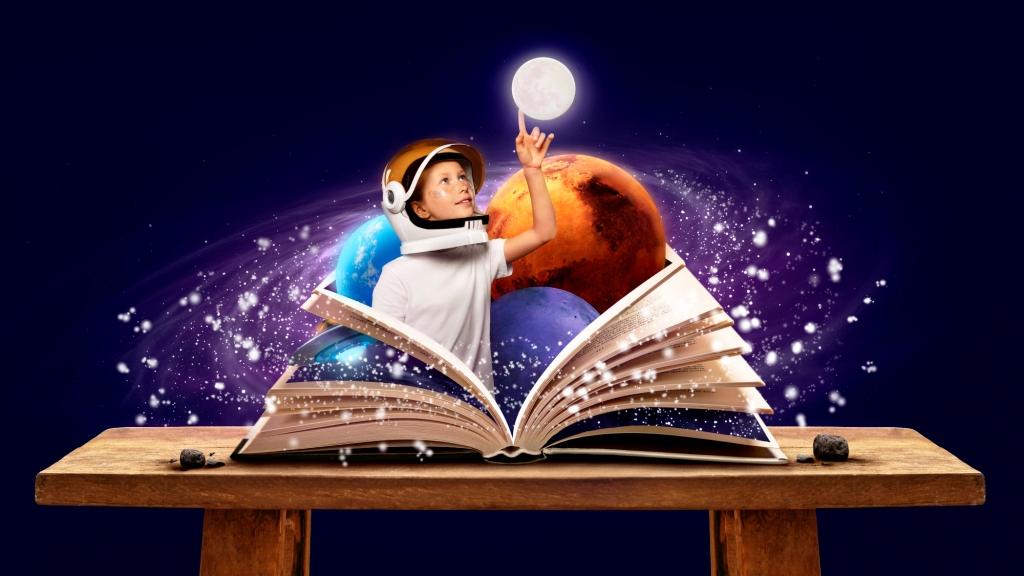Storytelling has always been the core essence of sparking imagination, and there has never been a more immersive way to experience it than through childhood stories. Remember those cherished moments of bedtime stories? The gentle glow of a bedside lamp, the cosy embrace of a blanket, and the soothing voice weaving tales of wonder—these memories are timeless and heartwarming. They etch vivid pictures in your mind, breathing life into characters and making magical stories feel real. Even today, their visual power remains remarkably memorable.
Children’s stories are, therefore, treasures of memory, with each visual being a precious gem. From colourful picture book pages to animated characters on screens, these visuals hold a special place in our hearts. For kids, these tales aren’t just stories; they’re gateways to uncharted worlds, windows into different characters, and repositories of wisdom. They kindle curiosity, ignite creativity, and transport them to unexplored places.
But what’s the secret sauce that makes stories so enchanting?
Looking deeper into the science that makes storytelling a magical experience for young minds.
Inside the minds of young explorers, a symphony of neurons dances to the rhythm of storytelling. Research reveals that stories engage multiple brain regions, creating a cognitive symphony. This engagement isn’t merely entertaining; it’s profoundly educational.
For children, this holds a unique sway over their focus. That’s why when sharing a picture book with a child, whether it’s a physical book or a digital one, vibrant illustrations spring to life, capturing their attention with details, colours, and characters. These visuals activate the visual cortex, reinforcing neural pathways for processing visual information.
For example, a cheerful sunrise scene doesn’t just showcase beauty; it introduces concepts like time, nature, and serenity. As the child gazes at the image and listens to the story, their brain connects the dots, enhancing comprehension and memory retention.
However, visual storytelling goes beyond cognitive development; it extends to emotional engagement—an essential aspect of a child’s growth. Visuals evoke emotions, fostering empathy and emotional intelligence.

A great example of this is a storybook featuring a courageous character facing challenges. The child witnesses their emotions through expressions and body language, learning to recognise and understand feelings, and fostering emotional intelligence and empathy.
Hence, when we explore the benefits of visual storytelling, we can identify several, including:
Enhanced Language Development: Visual storytelling exposes children to rich vocabulary and varied sentence structures, strengthening their language skills. For example, a storybook about a space adventure might introduce words like “cosmos,” “astronaut,” and “galaxy,” expanding a child’s vocabulary and linguistic abilities.
Cognitive Skills: As mentioned earlier, visual storytelling engages multiple brain regions, enhancing cognitive development, critical thinking, and problem-solving abilities. For instance, a story that presents a puzzle for the characters to solve encourages children to think critically and strategise.
Imagination and Creativity: Visuals stimulate a child’s imagination, encouraging them to create their interpretations of the story world. For example, a story with open-ended illustrations invites children to imagine what happens next or invent their characters and scenarios.
Cultural Awareness: Stories from diverse cultures broaden a child’s horizons, promoting cultural awareness and fostering tolerance. For instance, a storybook that explores traditions from around the world introduces children to different cultures, encouraging acceptance and curiosity about the world’s diversity.
Better Retention: Visuals make information more memorable, helping children retain knowledge for longer durations. For example, a story with visual cues, such as maps, diagrams, or timelines, aids children in remembering facts and details.
Emotional Resilience: Engaging with emotional narratives in stories helps children develop emotional resilience, aiding in their overall emotional well-being. For instance, a story that deals with themes like friendship, loss, or perseverance provides a safe space for children to explore and understand their emotions.
The science-backed power of visual storytelling transcends mere enchantment; it’s an educational experience that shapes young minds in profound ways. From enhancing language skills to nurturing creativity and empathy, visual storytelling is a treasure trove of benefits. Each page or screen is a stepping stone in a child’s journey of growth and learning.

Shared By: Shailesh Prithani,
Jumbaya





